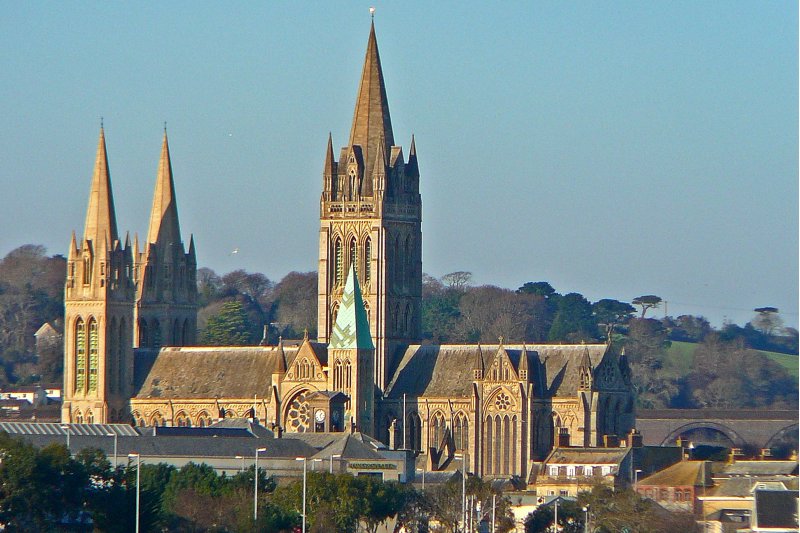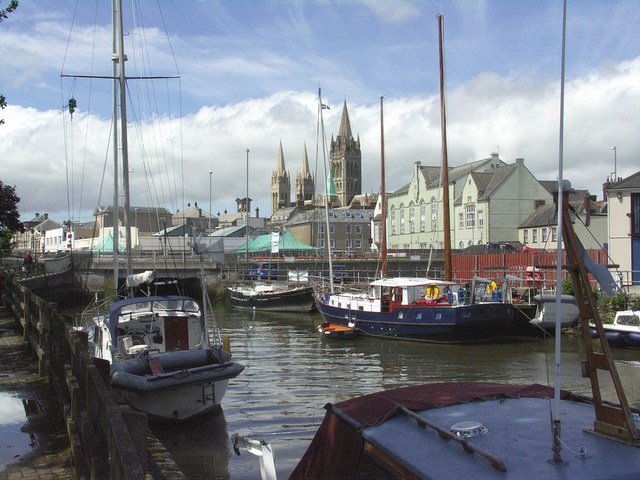 Truro Cathedral: Source: https://commons.wikimedia.org/wiki/File:Truro_Cathedral_7.jpg
Truro Cathedral: Source: https://commons.wikimedia.org/wiki/File:Truro_Cathedral_7.jpgAuthor: Tim Green

Truro is the only city in Cornwall, England. With a population of 17,000 people (2012 estimate), it is noted for being the southernmost city in Great Britain. It is located where the River Kenwyn meets the River Allen to form the Truro River, about 14 km (9 miles) from the coast.
The earliest settlement in the Truro area appeared during Norman times. In the 12th century, English chief justice Richard de Luci built a castle here. By the 14th century, Truro had developed into a major port. After a period of setback brought about by the Black Death, trade resumed in Truro during the Tudor period.
During the Industrial Revolution of the 19th century, Truro developed a number of industries including iron smelting, pottery and tannery. The Great Western Railway was built connecting Truro with London Paddington Station. Then in 1876, its town church was elevated to cathedral, and the following year Queen Victoria granted it city status.
 Truro, Cornwall: Source: https://commons.wikimedia.org/wiki/File:Truro_from_the_river.jpg
Truro, Cornwall: Source: https://commons.wikimedia.org/wiki/File:Truro_from_the_river.jpgAuthor: Mike Smith

As with many of the towns and cities in England, Truro underwent a period of decline in the 20th century, due mainly to a decline in the mining industry. The city center continued to thrive as a retail hub for Cornwall. This is where national chain stores are most likely to have their Cornwall branches.
Visiting Truro
If coming by car, take the A30 highway until Carland Cross, then continue on the A39 to reach Truro.Places of Interest in Truro
- Hall for Cornwall: A performing arts center in Truro.
- Royal Cornwall Museum: The principal museum detaling the history and culture of Cornwall. Address: River Street; Phone 01872 272205; Open Mon-Sat 10:00 am - 5:00 pm, last admission 4.30 pm; Admission: free
- Truro Cathedral: Completed in 1910, it is the tallest building in Truro.
Truro is  on the Map of cities in England
on the Map of cities in England
 Latest updates on Penang Travel Tips
Latest updates on Penang Travel Tips
Map of Ceremonial Counties of England

Copyright © 2003-2025 Timothy Tye. All Rights Reserved.

 Go Back
Go Back